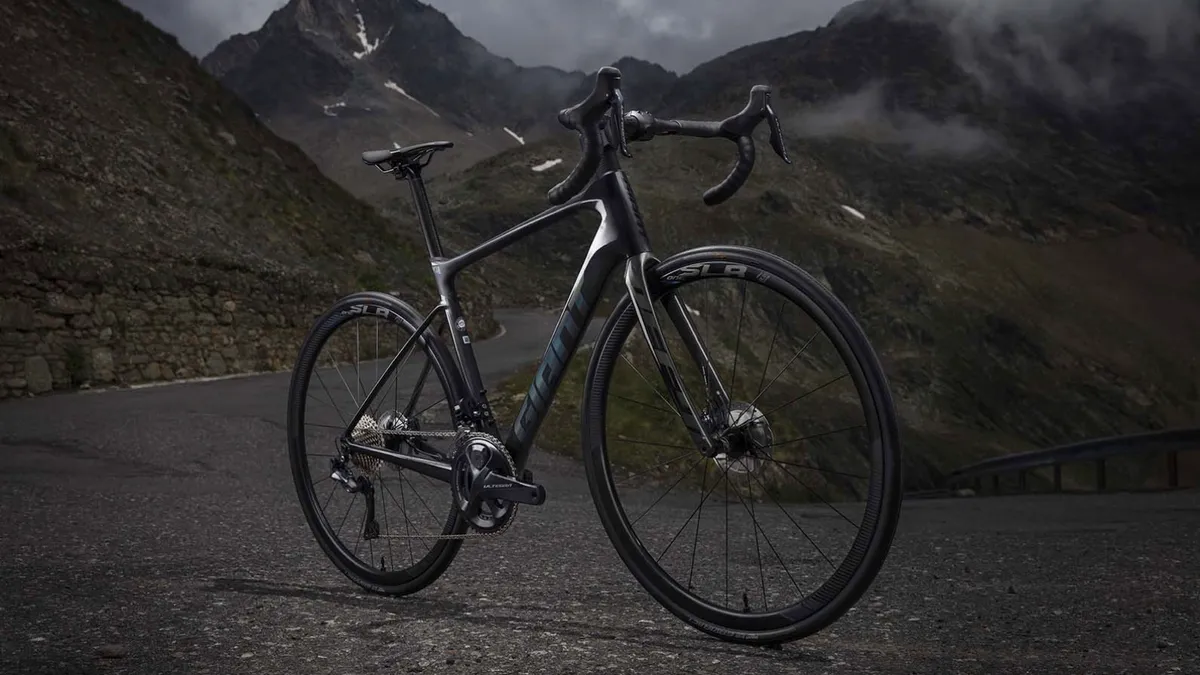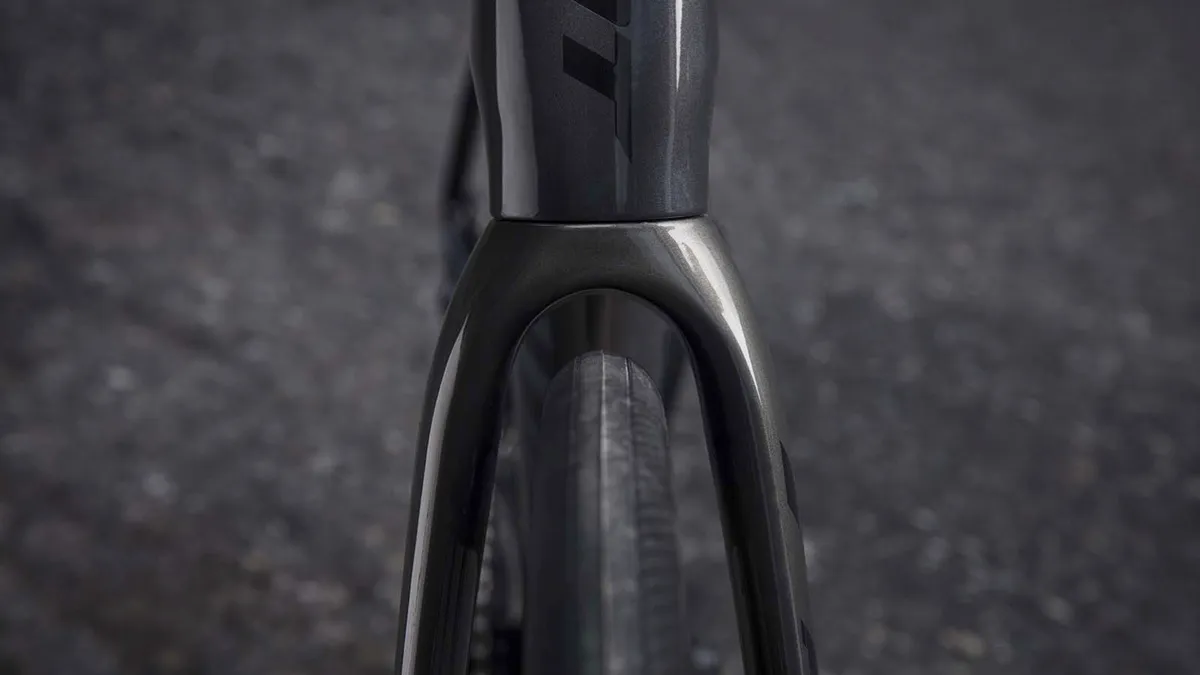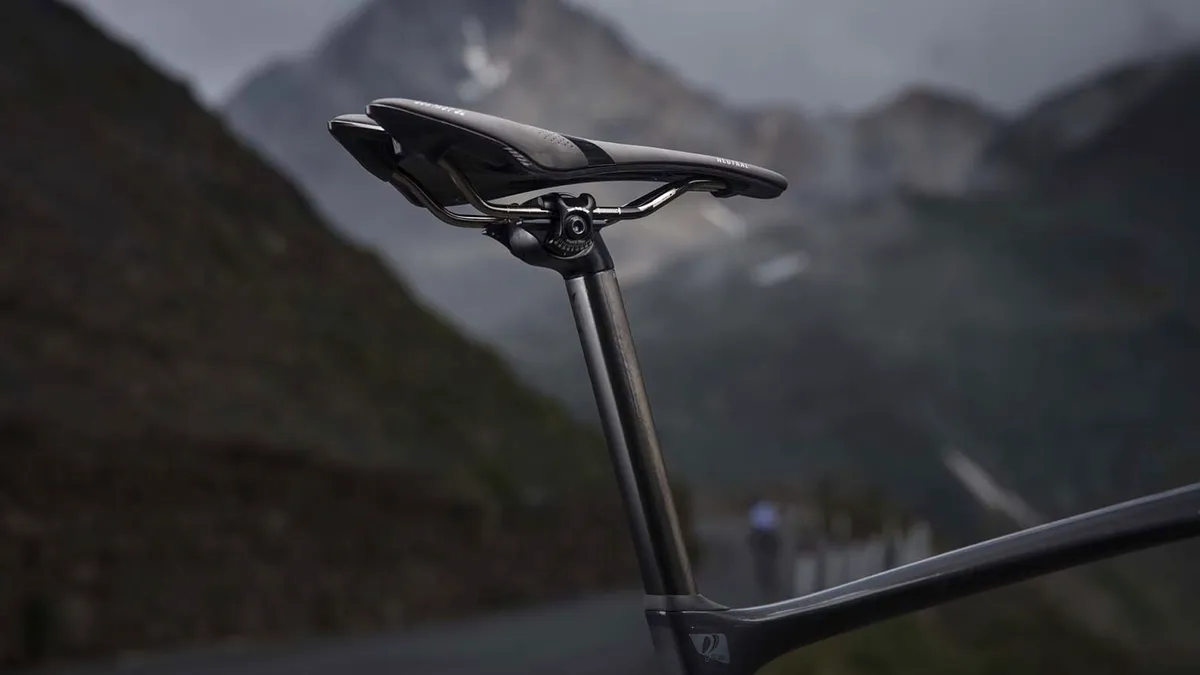Giant's Defy endurance machine gains Propel-like integration to the cockpit, increased comfort, plus mounts for guards, and even a power meter on range-topping bikes.
The Defy is a performance machine, yes it's aimed at the endurance sector but it’s still designed with the same goals as Giant's pro-race TCR or aero optimised Propel. So low weight, stiffness and all of the characteristics Giant applies to pro-level bikes are key.
The Defy is also Giant’s bread-and-butter machine; it’s globally its best-selling road bike, so it’s perhaps the most important bike in its range in terms of development.
Nixon Huang, the principal engineer on Defy, says: "Our main objective was to beat the performance of the 2015 bike, this was the first bike range to be disc only. We were ahead of the market on this along with specific compliance components like the D-Fuse post. We set out three goals for the updated Defy."
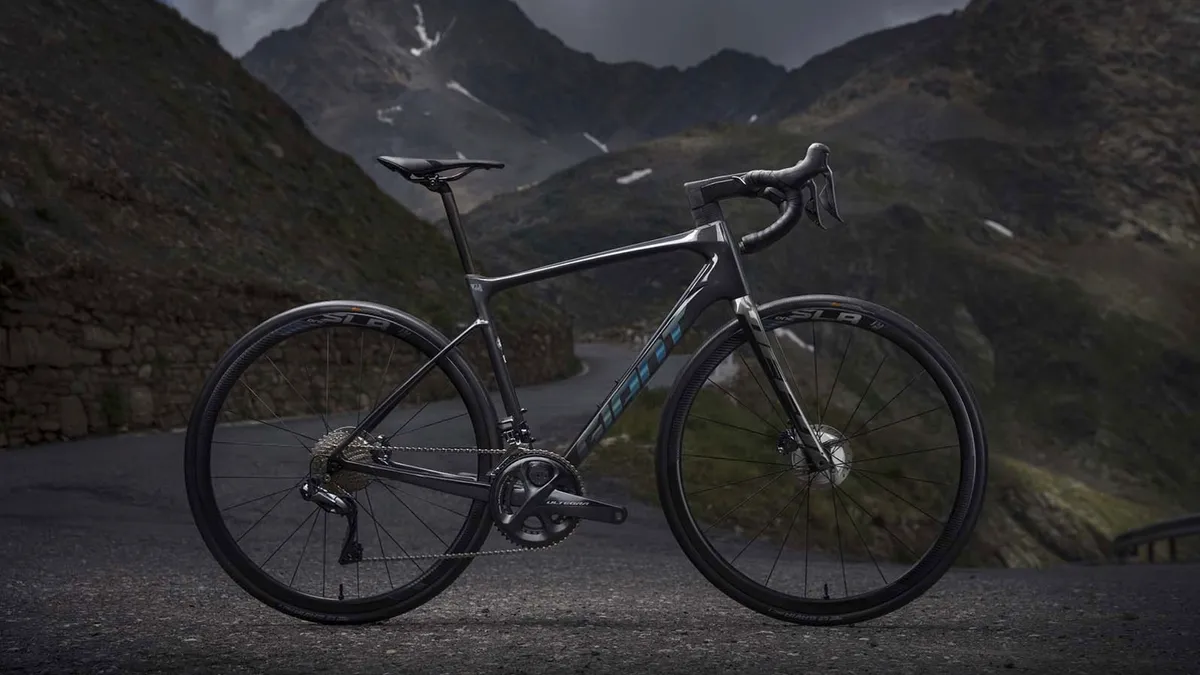
Giant's three goals
1. Engineered compliance
Giant has set out to improve the ride quality it incorporated with the D-Fuse seatpost — that's the D-shaped post designed to flex, and found on the last generation Defy and TCX 'cross bikes.
The big development is taking the D-Fuse concept to a handlebar, which is a tougher call because you don’t want overly flexing bars that will be detrimental to handling, but you want to have enough to smooth the vibrations.
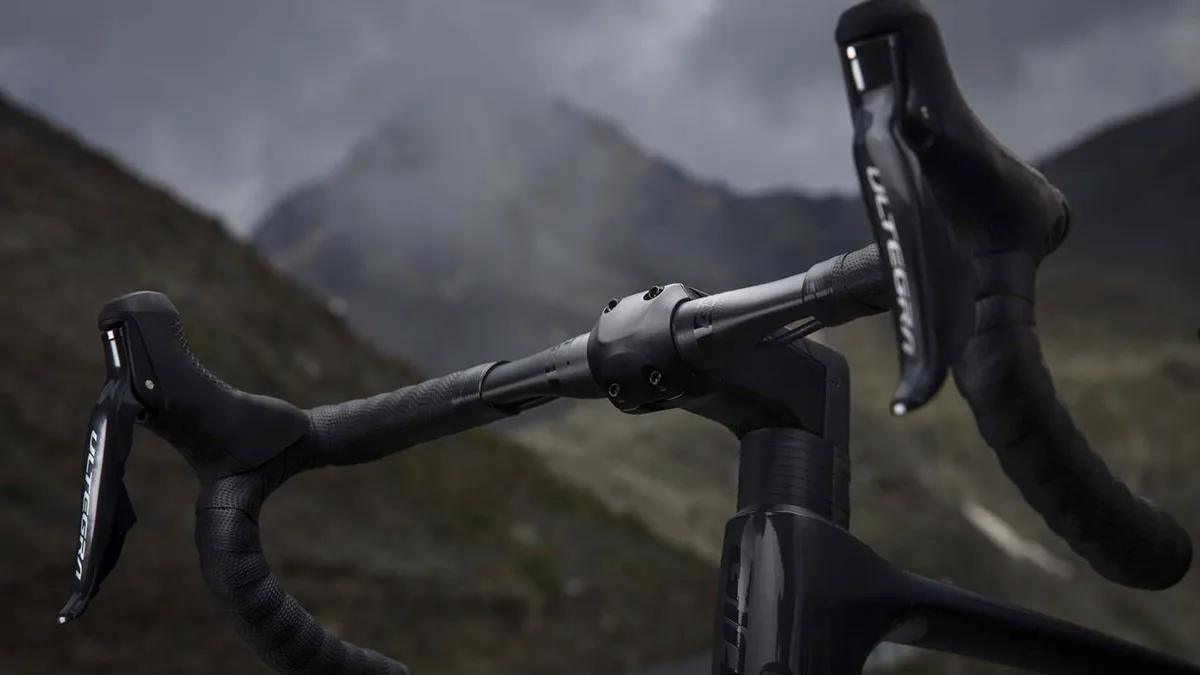
The new Contact SLR (carbon) and SL (aluminium) D-Fuse handlebars have a similar D-shaped profile — the carbon cross-section is 19mm x 35mm, and the alloy is 17mm x 30mm. The shape is orientated so it complies when being ‘pushed’ from above when you hit a rut or pothole, and Giant claims 10 percent more compliance than the standard Contact SLR bar.
The design also ensures that the handlebar stays stiff when you "pull", when sprinting or climbing hard out of the saddle. Here it claims an increase in stiffness of a huge 30 percent.
Giant claims that the bar, working in conjunction with the seatpost, provides more than enough compliant comfort without having to resort to complex pivots, inserts or suspension.
With the frame's reshaping and the new fork profile, Giant has also made provision for bigger tyres, with the new Defy able to easily take a 32c tyre.
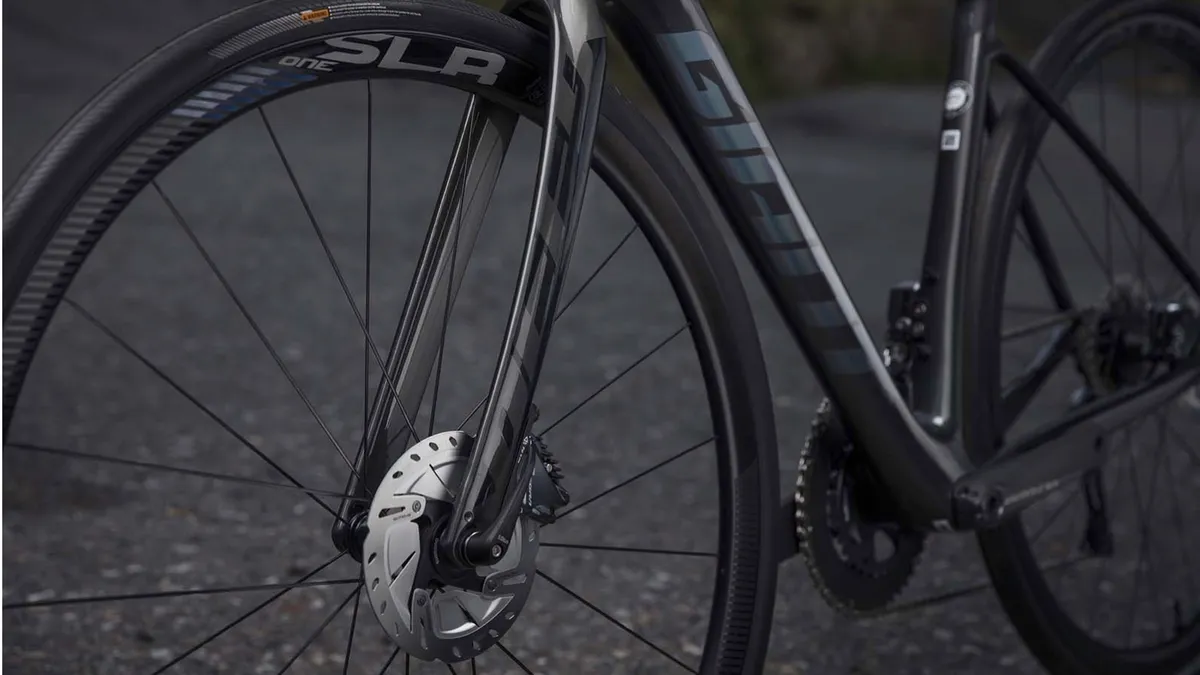
2. Total control
Bit of an obvious one, but the new Defy features, as you’d expect, 12mm thru-axles (100 x 12 front, 142 x 12 rear) and of course flat mount disc mounts. I guess we don’t need to go over the advantages of discs brakes for control and consistent braking in all weathers.
3. Versatility
The versatility comes from the wider range of tyre sizes that are now possible to fit. Stick with some slender 25s for a smooth road sportive, or switch up to 32s if you're heading out to ride pavé.
The geometry has been tweaked slightly, but the important head angle, seat angle, stack and reach remain the same as the previous generation. Only the wheelbase has been elongated, and only by 3mm to incorporate bigger tyres, along with the bottom bracket drop (up 5mm to 70mm), again to allow for larger rubber.
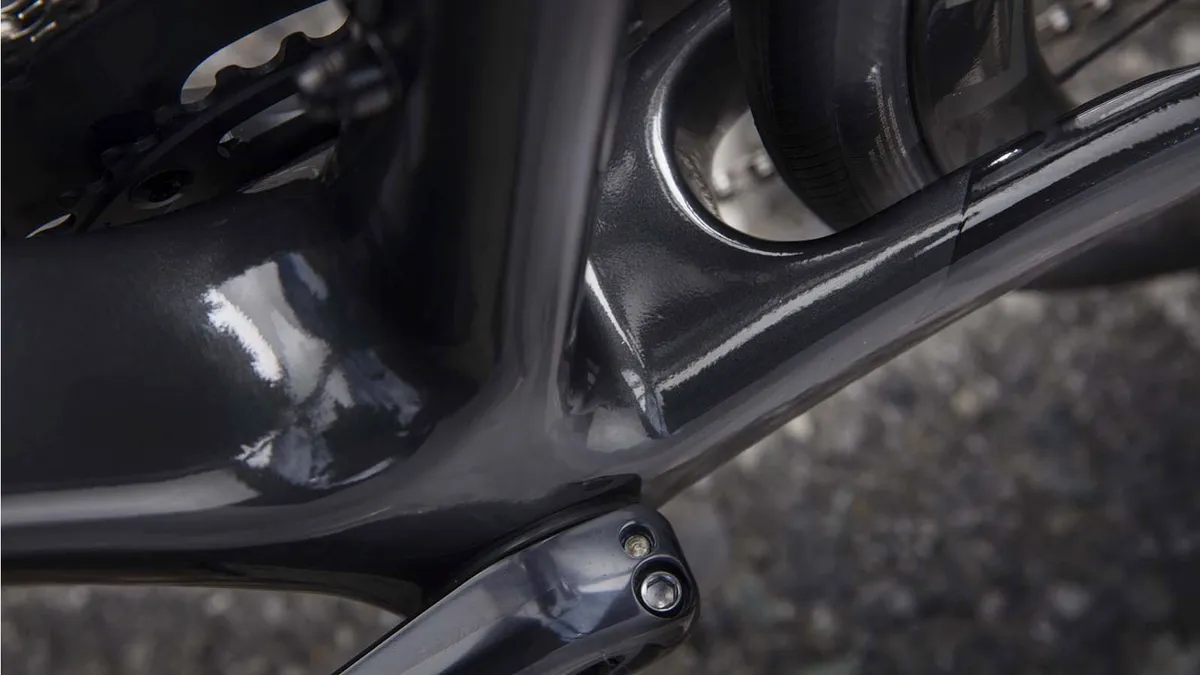
It’s not just fixtures and fittings that have been upgraded, Huang tells us that: "We’ve also looked at the composites makeup and revised the lay-up schedule (the way in which the carbon plies are orientated in the mold) to decrease weight and increase vital areas of stiffness at the head tube and BB shell."
Nixon continues: "We’re able to make improvements and changes like this more efficiently than most as we own and completely control all of our manufacturing."
In-house power meter
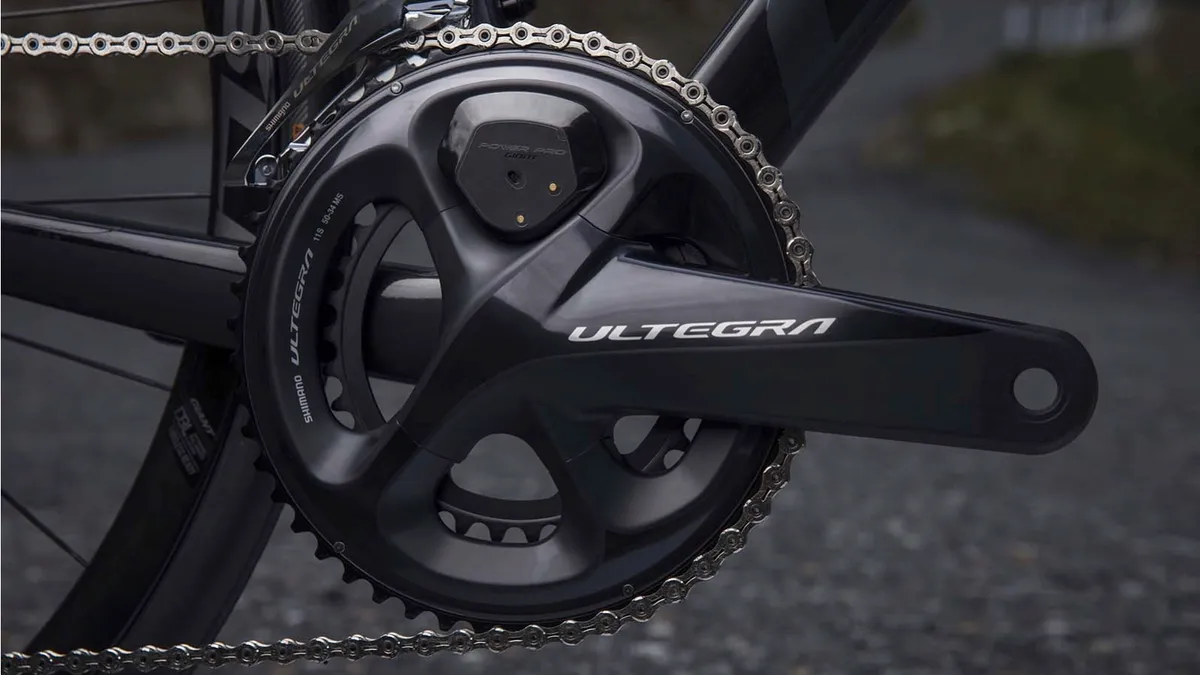
Perhaps the most surprising addition to the Defy’s specification, on the flagship Pro 0 model, is a new Giant Power meter, called the Power Pro. It was developed, designed and manufactured completely in house.
It has been engineered with multiple sensors for both left and right crank arms, and can display multiple metrics: watts, pedal balance, force angle, and cadence. It can either be paired with Giant’s own Neostrack GPS or any ANT+ compatible unit.
Battery life is a claimed 150 hours, or 1,500miles, on a single charge, and it can be easily recharged in situ. An LED indicator on the crank shows current battery level or you can see more detailed info via Giant’s own Ridelink app, which is also where you can install firmware upgrades.
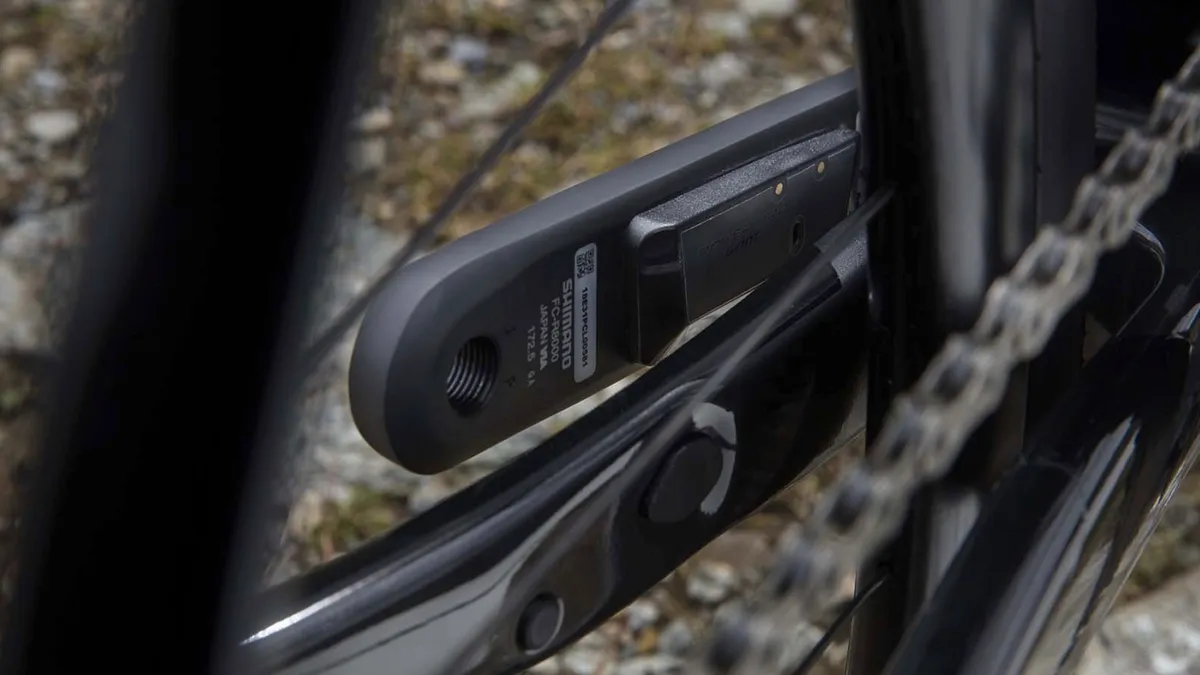
Giant says the meter has had extensive testing for waterproofing, heat and temperature, salt corrosion, UV, vibration, fatigue testing and impact tests. It's rated to IPX7 for waterproofing, has been tested for storage temperature from between -20°C to +79°C, and a working range between -10°C and +50°C.
The meter will only be available on Giant’s premium bikes for 2019, with the aim to make it available after market in 2020 with a guide price of around $1,000. So to see this tech fitted to a bike priced at $5,300 (approx £4,000) is, we think, a first.
The power meter charges with a split USB cable thanks to magnetic connectors at the crankset spider.
UK pricing won't be announced until 8 August, so we’ll update pricing as soon as we get it.
The 2019 Giant Defy range
Defy Advanced Pro series
Giant's top of the range line consists of two models. The real highlight is the new Pro 0 model's dual-sided power meter. As explained above, the meter was developed completely in-house and comes machined into the Shimano Ultegra crankset.
Defy Advanced Pro 0 chassis highlights
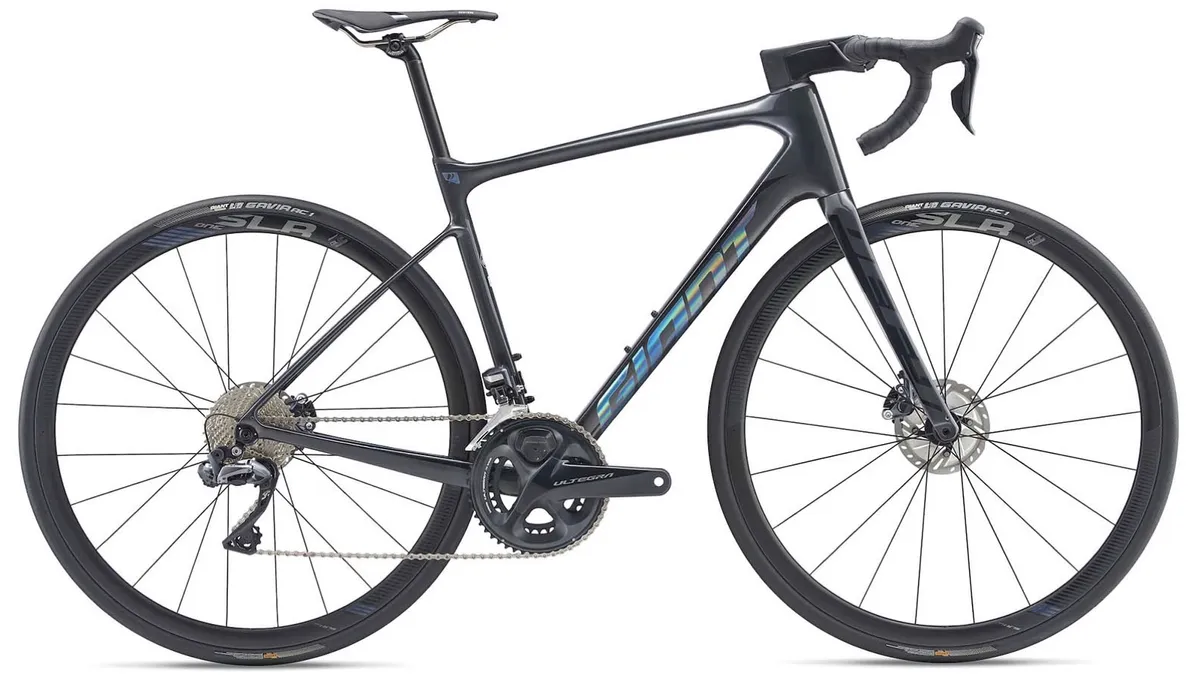
- Advanced grade frame and fork
- D-Fuse SL post
- SLR D-Fuse handlebar
- Contact SL Stealth stem
- Overdrive 2 full carbon 11/4inch steerer tube and headset
- BB86 Powercore BB
- Ridesense integrated speed/cadence sensor
Defy Advanced Pro 0 component highlights
- Ultegra Di2, SLR0 carbon wheels with tubeless tyres
- Dual sided Giant Power pro power meter
- Defy Advanced Pro 0: $5,300
Defy Advanced Pro 1 chassis highlights
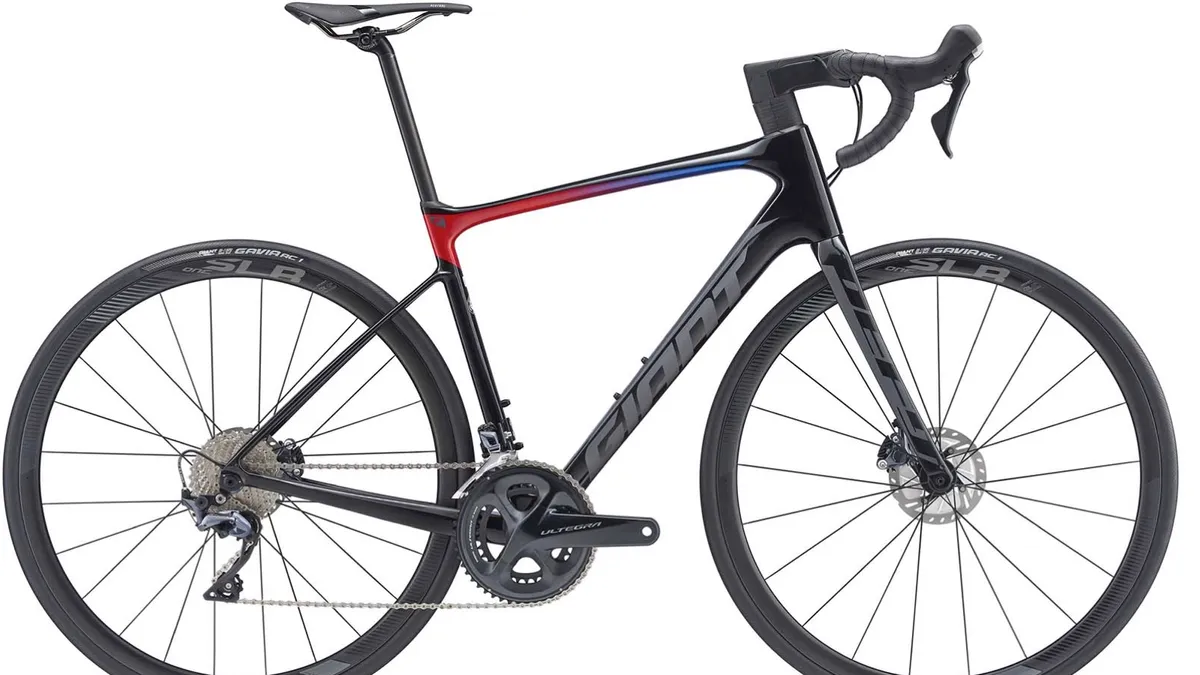
- Advanced grade frame and fork
- D-Fuse SL post, SL D-Fuse (alloy) handlebar
- Overdrive full carbon steerer tube
- BB86 Powercore BB
- Ridesense integrated speed/cadence sensor
Component highlights
- Shimano Ultegra (mechanical) SLR 1 carbon wheels with tubeless tyres.
- Defy Advanced Pro: $3,600
Defy Advanced Pro 2 chassis highlights
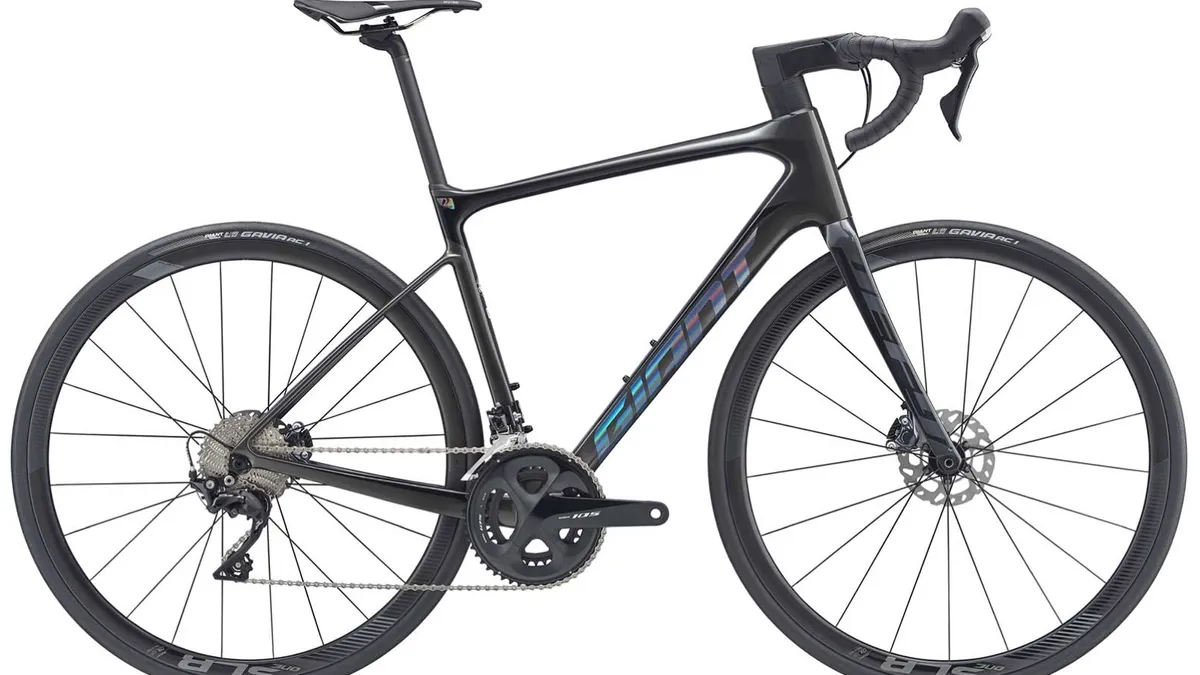
- Advanced grade frame and fork
- D-Fuse SL post, SL D-Fuse (alloy) handlebar
- Overdrive full carbon steerer tube
- BB86 Powercore BB
- Ridesense integrated speed/cadence sensor
Defy Advanced Pro 2 component highlights
- Shimano 105, SLR 1 carbon wheels with tubeless tyres
- Defy Advanced Pro 2: $TBC
Defy Advance Series
Defy Advance chassis highlights
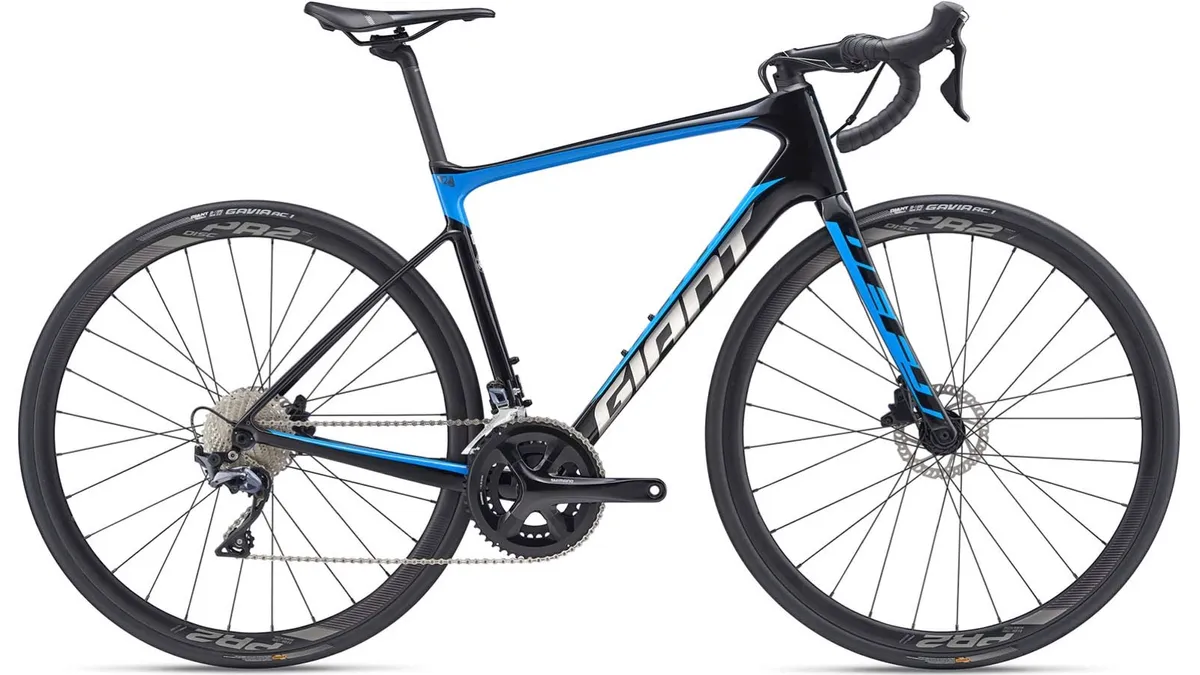
- Advanced grade frame and fork
- D-Fuse SL post, SL D-Fuse (alloy) handlebar
- Overdrive full carbon steerer tube
- BB86 Powercore BB, Ridesense ready
Defy Advance component highlights
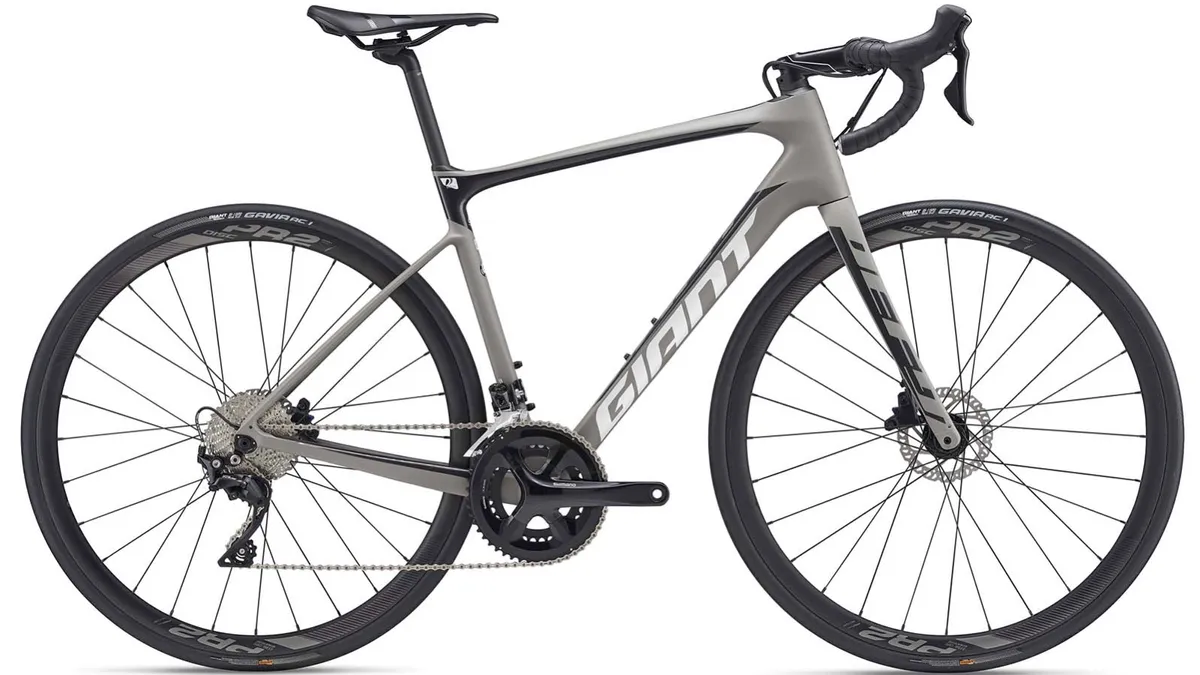
Giant PR2 wheelsets with Giant AC 1 28c tubeless tyres across all models
Advanced 1: Shimano Ultegra Advanced 2: Shimano 105 (mix) Advanced 3: Shimano Tiagra
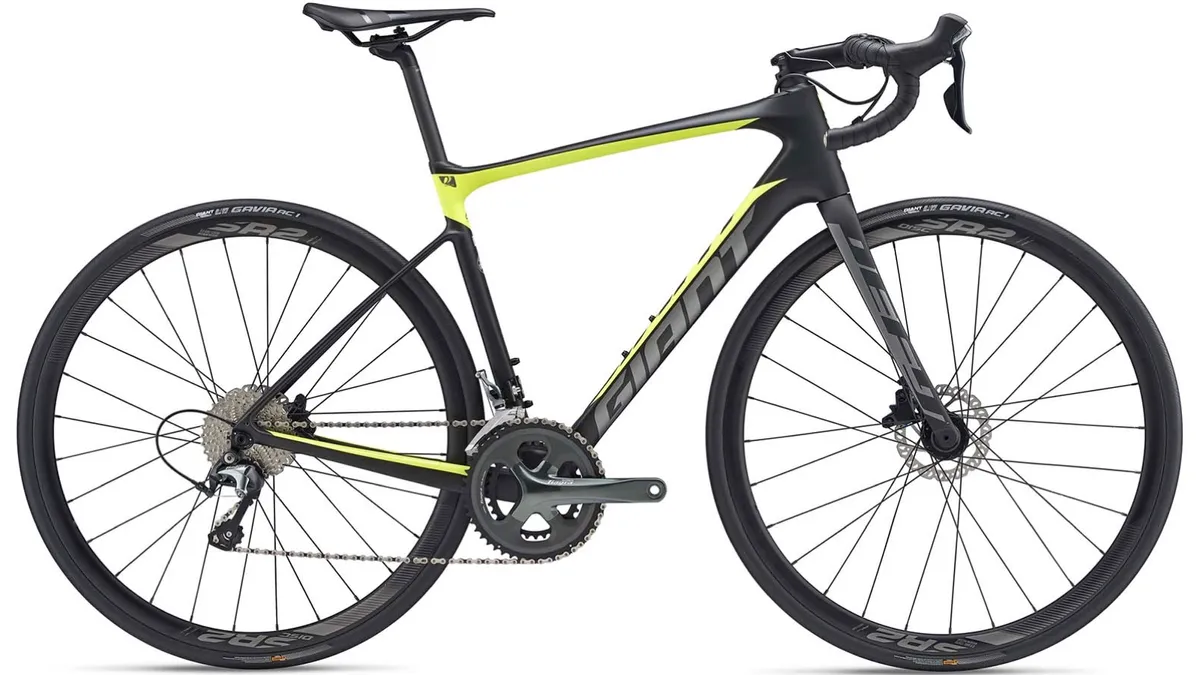
- Defy Advanced 1 (Shimano Ultegra): $2,400
- Defy Advanced 2 (Shimano 105 (mix): $2,000
- Defy Advanced 3 (Shimano Tiagra): $1,750
